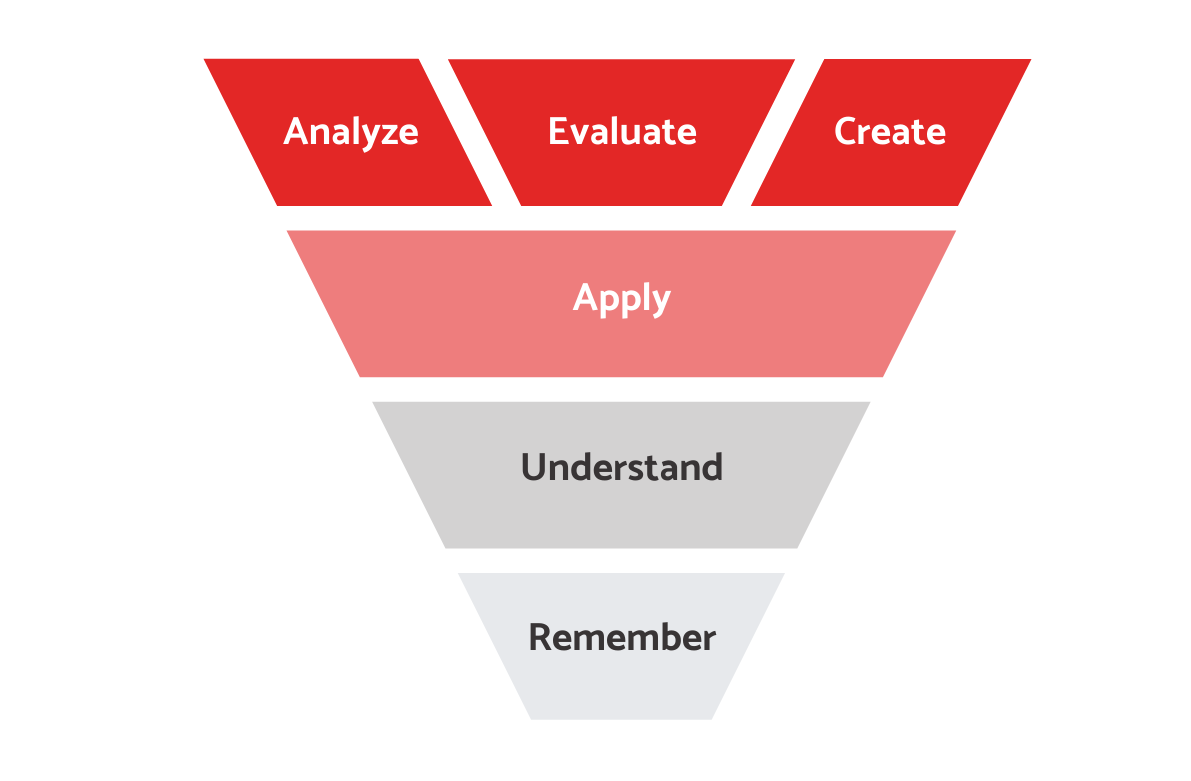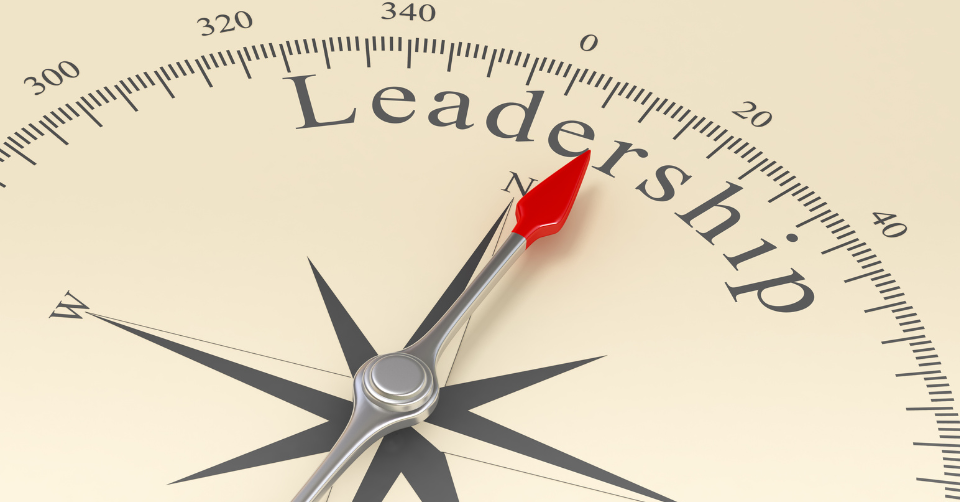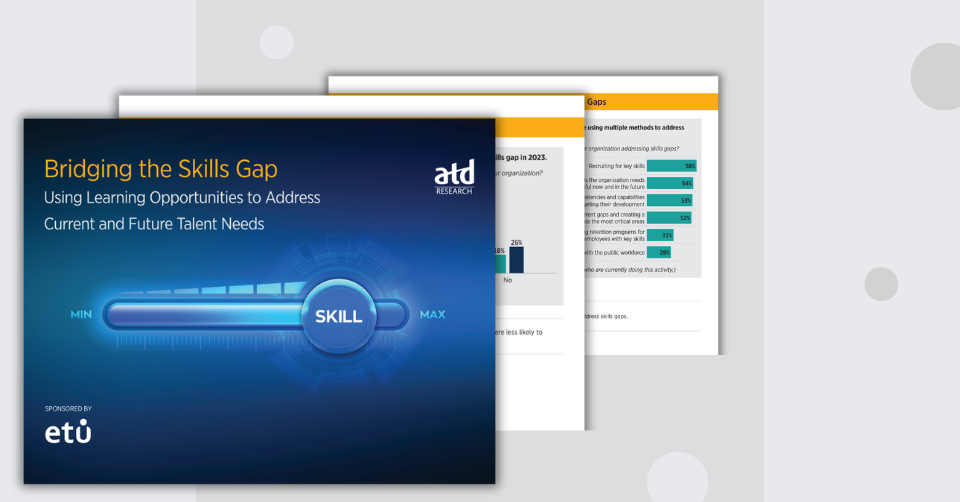Employee knowledge, skills & behaviors… What's the difference?

What’s the difference between the three terms “knowledge,” “skills” and “behavior”? More importantly, why is this distinction important as it relates to learning impact?
We delve into the theories behind these concepts, as well as why immersive simulations can be extremely effective for upskilling and reskilling within an employee learning program.
3 separate concepts
So, let's define knowledge vs skills vs behaviors. For many people, knowledge and skills are similar concepts used to describe competency. But for learning professionals, they should be considered as two quite distinct yet related concepts. The concept of “behavior” -- a third distinct term often used when describing learning impact -- can be thought of as the natural responses to situations and stimuli, repeated so consistently that it becomes embedded in the organization’s DNA.
Remembering & understanding
The world of L&D has long used knowledge capture, knowledge recall, and what Bloom’s Taxonomy referred to in his classic knowledge model as remembering and understanding as the primary currency of learning.
For over 100 years, Ebbinghaus’ Forgetting Curve research has validated that learners will forget 70% of what they “learned” within 24 hours and 90% of what they supposedly learned within a month. In a typical e-learning environment, testing for level 1 and level 2 knowledge (remembering and understanding) often demonstrates that the standard approach to L&D not only produces disheartening results but, more importantly, is a horrendous ROLI (return on learning investment).
Remembering and understanding certainly has its place. To perform at any level in any role, you need a baseline level of knowledge concerning the position – how to perform well. As illustrated below, this kind of knowledge is pictured as foundational to skills and behaviors. However, the acquisition of this type of knowledge is not necessarily a leading indicator of improved behavior/better performance.

Turning knowledge into skills and behavior change
Imagine this … a national call center is reviewing data indicating customers consistently have an extremely negative experience with call agents. Feedback shows customers are upset by the lack of empathy conveyed by the call agent. The agents are trained to stick to the script and never deviate from it, allowing no opportunity to connect with the customer at a human level. A supervisor could infer that there is a lack of understanding by the call agents, and assume this is a training issue, thinking the answer is to send over more videos, more lectures, more courses, more, more, more…
However, the problem is not that the call agents don’t know how to make the call, or read the scripts. In other words, this is not an issue about understanding or recall of knowledge from prior training. There is no amount of knowledge transfer that would solve this problem.
In reality, what is required to solve this problem is the introduction of skills. Skills refer to the ability to apply knowledge to specific situations. In the context of a business environment, skills are developed through practice as knowledge is applied to help solve a problem. The more they are practiced, the more proficient the learner becomes and behaviors can change. In contrast, the more a learner recalls does not necessarily lead to the learner becoming more proficient in the skill.
Upskilling and reskilling with immersive simulations
That’s why specific, situational-based immersive simulations are effective when upskilling or reskilling corporate learners. Unlike traditional “train-then-assess” approaches that focus on information retention, immersive learning simulations allow a focus on skills, rather than knowledge, “measure-learn-perform” approach.
Through the realistic role play and practice within the customized immersive simulation, the learner is able to apply the new skills and better adopt new behaviors.
Going back to the call center scenario, the soft skills of customer empathy, authentic communication, and expressing appreciation all need to be introduced and practiced. Lectures and content are never going to lead to better performance. However, as these skills are repeatedly practiced over time, the responses and behaviors become natural to the person practicing the skill.
To simplify this concept and define the difference between knowledge vs skills: Knowledge is theoretical, and skills are practical. Knowledge answers the question of what, and skills answer the question of how.
You can know all the rules of a sport like tennis, and also the statistics on who has the fastest serve. Becoming good at the sport, however, involves hands-on play, practice of techniques – that is how you improve your skills… through experience. You can easily learn the rules of any sport through trial and error, as you play it.
The same applies to a job. An employee can know a lot about a subject matter, but might not have the skills required to successfully apply that knowledge to achieve specific tasks. Therefore, if you want to better prepare your team to meet the desired performance goals, they don’t need more lectures. What they need is more practice. The production of more presentations and more instructional design will only make people more knowledgeable; it will not provide them with the skills to better do their job.
Time to focus your learning strategy on demonstrating what learners can “do”, rather than what they “know”. This type of upskilling happens through immersive simulations. In order for people to achieve the desired level for a task, they must be provided with opportunities to practice and reinforce the actions required to improve their performance and ultimately master it.
Corporate learning and behavior change
Effective corporate learning initiatives can benefit by including immersive simulations to the mix, where scenarios and activities can be played out in the context of the learner’s workflow. When training comes in the form of lectures, slide decks, and a pass/fail test, we end up with individuals who can understand and recall many things but can’t do much with it on the job and ultimately demonstrate no meaningful behavior change.
Ultimate behavioral change comes from mastering skills. Consider adding scenario-based immersive simulations to your digital learning curriculums, so learners can experience consequences, coaching, social interaction, and have the opportunity to practice new skills in a safe environment. This type of learning is what will deliver truly high-performance results and achieve your desired ROI.
 Conor Gaffney, Chief Product Officer
Conor Gaffney, Chief Product Officer
Conor leads simulation design within ETU, working with business stakeholders and instructional designers to deliver award winning assessment and training simulations. Conor believes that with the right tools and processes, realistic and immersive simulations can be quickly and easily developed by non-technical subject matter experts.
More Information
Visit our leadership simulations page to find out more about the business value, or why not contact us for an informal discussion about your training goals?

